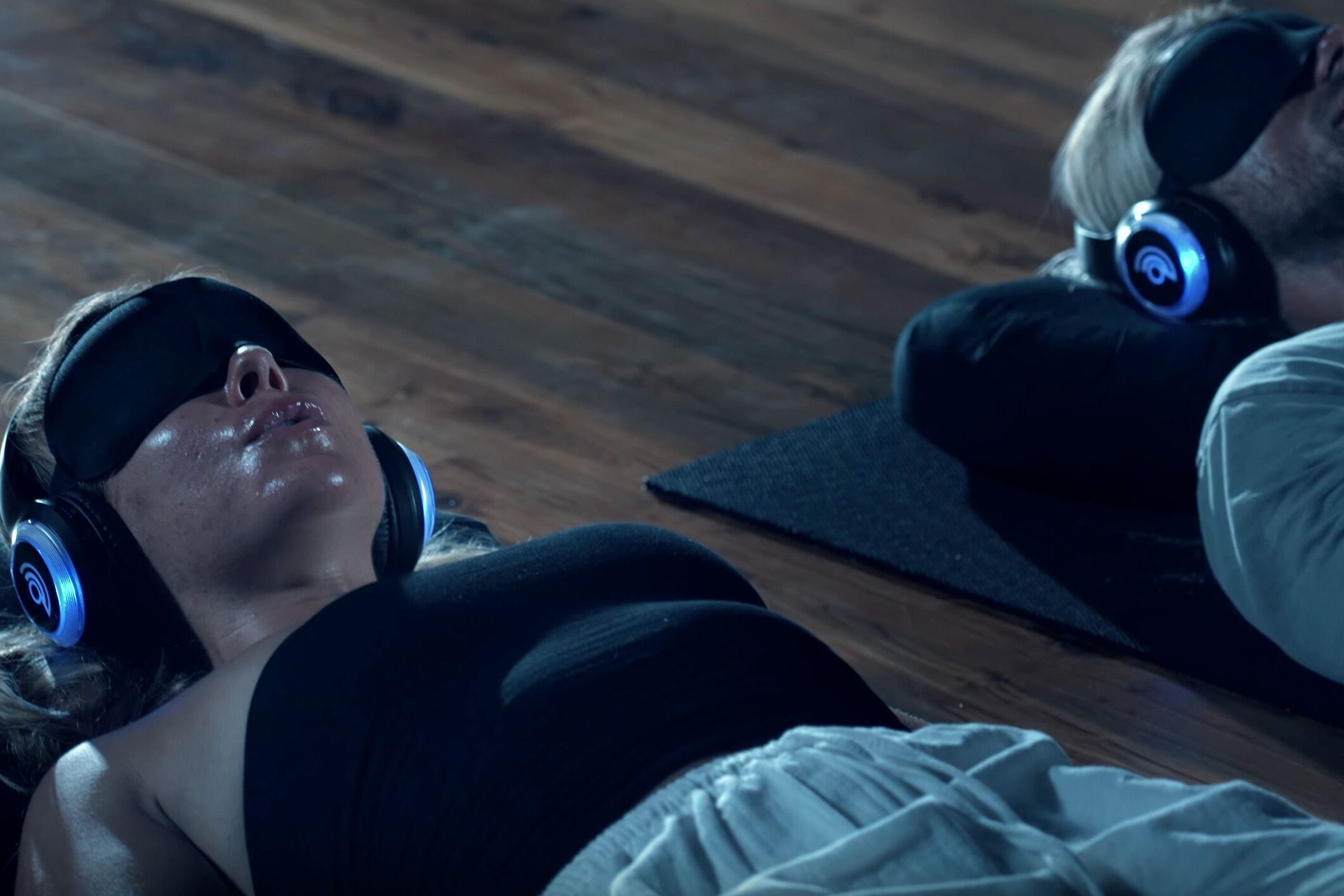If you, or someone close to you struggles with addiction. Then you know that recovery isn’t linear. Or easy. One day you feel strong, the next you’re struggling just to get through it. And if you’re reading this then chances are you have tried a lot of different things and you’re pretty open to try whatever works.
That’s where 9D breathwork comes in. At Seasons Bali, we’ve been using this technique as part of our holistic approach to addiction recovery and the results have been pretty remarkable. We’re talking about real, lasting changes in how people process trauma, manage cravings and reconnect with themselves.
What makes addiction recovery so hard
Addiction recovery isn’t just about stopping a behaviour. It’s about rewiring your brain. Most traditional approaches focus on the cognitive side of things. Talk therapy, group sessions, understanding triggers. Which are all extremely helpful and important techniques that are important to the healing journey of recovery.
However, if your brain is too loud already, its hard to think properly to even talk during these sessions. That’s where 9D breathwork can help you. Sometimes you need something that bypasses the thinking mind entirely and goes straight to where the real healing needs to happen, your nervous system.
That’s the thing about addiction, its not just psychological, its deeply somatic. Your body holds onto trauma, stress patterns and emotional wounds in ways that talking alone can’t always reach.
Enter 9D breathwork
So what makes 9D breathwork different than regular breathwork? It’s the multidimensional approach that sets it apart. Instead of just focusing on breathing patterns, you’re getting hit with nine different elements working together.
These nine elements are breathwork, sound healing, guided imagery, somatic experiencing, binaural beats, subliminal hypnotherapy, solfeggio frequencies, 432Hz harmonic tuning and neuro linguistic programming.
It may sound extremely overwhelming but there is genuine science and research behind each part. For example, the binaural beats use different frequencies in each ear to influence brainwave patterns. The solfeggio frequencies are specific tones that have been shown to promote healing and emotional release.
Why this works for addiction recovery
Traditional therapy often focuses on understanding why you use, identifying triggers, developing coping strategies. Which are all genuinely helpful and necessary work when it comes to healing. But 9D breathwork goes deeper because it helps you actually process and release the underlying trauma and emotional patterns that drive addictive behaviour in the first place.
During a session, you might find yourself accessing memories or emotions that have been stuck for years. Maybe childhood trauma that you’ve never fully processed. Grief you’ve been avoiding. Anger that’s been festering. The difference is you’re doing this in a safe, supported environment where your nervous system is being regulated by all these other therapeutic elements.
What actually happens in a session
Most 9D breathwork sessions run about 90 minutes to 2 hours total. You’ll start with an introduction where the facilitator explains the process and teaches you the breathing technique.
Then you lie down comfortably, put on specialised headphones, and close your eyes. The facilitator guides you through connected breathing patterns – basically breathing in a continuous cycle without pauses between inhale and exhale.
Throughput the session you’ll hear the various sound elements like binaural beats, frequencies, sometimes guided visualisations or affirmations.
The thing is, it can be intense. I’ve had people tell me it was more powerful than psychedelic therapy sessions they’ve done. Others describe it as like having years of therapy compressed into a single experience. Some people don’t have as dramatic experiences as feel as though they ve had a really good relaxing massage. Everyone experiences are different and also normally change as sessions go on.
Preparing for a breathwork session
If you’re thinking about doing a session there are some things to keep in mind. Try not to eat heavy meals at least 4 hours before. If your body is using energy to digest your food its not allowing your body to fully be involved with the process. Your body needs energy for the breathing, not digesting food.
Wear comfortable, loose clothing. You’ll be lying down the whole time, but you want to breathe freely without any restrictions around your chest or abdomen. Those tight sports leggings might look good but they’re not ideal for this kind of work.
Don’t have something planned for immediately after that you need to get to. Give yourself time afterwards to ground yourself. You may not think its necessary, but these sessions bring up emotions and even old traumas you may not have processed. Give yourself space to just be with whatever you experienced.
Common mistakes and realistic expectations
Sometimes people expect drastic and permanent results after just one session. But the truth is that 9D breathwork isn’t a magical cure that takes away all your problems, it’s a tool When practiced consistently, it helps you reconnect with yourself, rewire your nervous system, and build resilience.
Another issue that comes up a lot is when patients try to control the experience.
The whole point is surrendering and allowing whatever needs to come up. When you hold rigid expectations about what the session should feel like, you risk disappointment or unnecessary stress. Letting go and trusting the process is where the real breakthroughs happen.
Who should consider this approach
9D breathwork can be really helpful for people who want to use try traditional talk therapy but find it difficult to really open up. Its really helpful for people who process trauma and emotions through your body and want a somatic way to release.
It’s also great for people who struggle with meditation or mindfulness practices because their minds are too active. The multidimensional approach gives your brain enough to focus on that racing thoughts tend to settle naturally.
On the flip side, if you have severe cardiovascular issues, epilepsy or certain psychiatric conditions, check with a healthcare provider first.
Integration and ongoing support
The aftermath of your session can be almost as important as the session itself. Integration is where the work really begins. You might have insights, emotional releases or shifts in perspective that need time to settle and make sense.
Having support during this process is crucial. Whether that’s a therapist, counsellor, support group or trusted friends. Make sure someone is there to talk with you about your experience.
The bigger picture of holistic recovery
We are not going to pretend that 9D breathwork alone will solve addiction. Recovery from addiction require a lot of personal work and growth along side medical support and lifestyle changes. But adding 9D breathwork into your healing routine is a powerful tool and can help make the healing journey easier.
When doing 9D breathwork consistently you can develop life long skills. You develop more resilience, better stress management skills and a stronger connection to their own inner wisdom.
When you are able to manage how you react to triggers and stressful situation, you regain power over your thoughts and your actions. Previously you may have reached for substances but with work through 9D you can learn how to manage your emotions and rewire your brain to reach for healthier ways to release.
The thing about addiction is that it often involves a disconnection from yourself, from your body, your emotions and your authentic needs and desires. 9D breathwork helps you get that connection back with yourself. It helps reconnect you with your own body and mind again.





